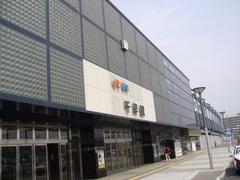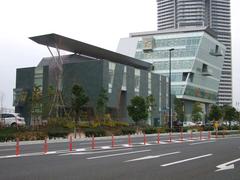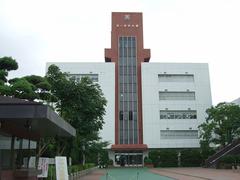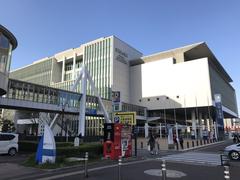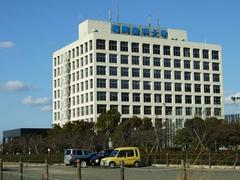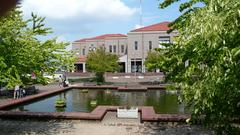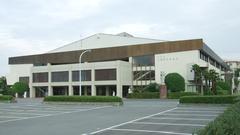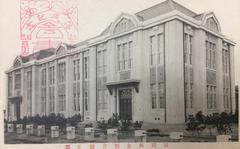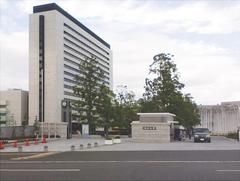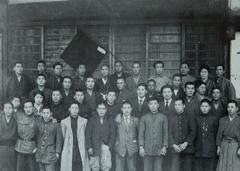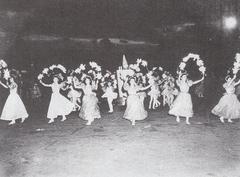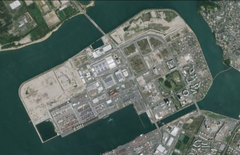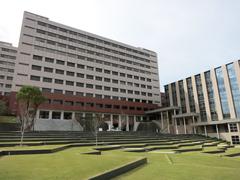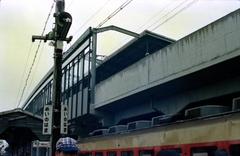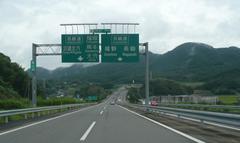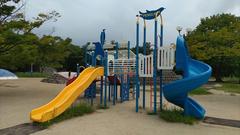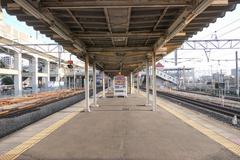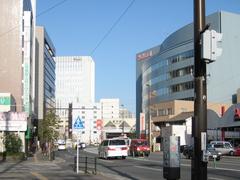Ropponmatsu Station Visiting Hours, Tickets, and Fukuoka Historical Sites Guide
Date: 04/07/2025
Introduction to Ropponmatsu Station and Its Significance
Ropponmatsu Station (六本松駅), located in Fukuoka City’s Chūō Ward, is a pivotal hub on the Nanakuma Subway Line. More than a mere transit point, the station stands as the gateway to a neighborhood that gracefully balances its Edo-period heritage with contemporary urban development. The name “Ropponmatsu,” meaning “six pine trees,” originates from an Edo-era landmark, symbolizing the area’s deep historical roots.
Since opening in 2005, Ropponmatsu Station has played a key role in connecting visitors to a rich array of attractions. These include the innovative Fukuoka City Science Museum, the tranquil Ohori Park, and the historic Fukuoka Castle Ruins in nearby Maizuru Park. The district’s transformation from the former Kyushu University campus into a thriving residential and cultural quarter underscores Fukuoka’s broader urban renaissance, blending tradition, creativity, and modern amenities.
This guide compiles detailed information on station facilities, visiting hours, ticketing, accessibility, and practical travel tips, offering everything you need to make the most of your visit. Whether your interests lie in history, science, culinary exploration, or cultural immersion, Ropponmatsu is a dynamic starting point for discovering Fukuoka.
For up-to-date details and planning resources, refer to the Fukuoka City Subway website, Fukuoka Now, and GoFukuoka.
Table of Contents
- Introduction to Ropponmatsu Station
- About Ropponmatsu Station
- Historical Background
- Key Attractions and Visiting Information
- Historical Evolution and Urban Transformation
- Cultural and Social Significance
- Urban Livability and Family Appeal
- Integration with Fukuoka’s Urban Identity
- Economic and Social Impact
- Visitor Experience and Practical Tips
- Station Layout and Facilities
- Ticketing and Accessibility
- Connectivity and Local Attractions
- Historical Monuments and Cultural Sites
- Getting There and Tips
- Visual Highlights
- FAQ
- Summary and Visitor Tips
- References and Further Reading
About Ropponmatsu Station
Ropponmatsu Station, opened in 2005 on the Nanakuma Line, offers direct access to a neighborhood celebrated for its historic and cultural vitality.
- Operating Hours: 5:30 AM to midnight daily.
- Ticketing: Purchase tickets via automated machines (cash or IC cards like Nimoca, Suica, Hayakaken). Standard subway fares apply; no special tickets required.
- Accessibility: Fully barrier-free with elevators, tactile paving, and bilingual signage (Japanese/English).
Historical Background of Ropponmatsu
Ropponmatsu was historically a quiet residential district, named after a landmark of six pine trees from the Edo period. The area’s academic character was shaped by the presence of Kyushu University, and its postwar development saw a mix of governmental and educational facilities. The opening of Ropponmatsu Station in 2005 and subsequent urban redevelopment—most notably the transformation of the former university campus into the Ropponmatsu 421 complex—have revitalized the district, turning it into a vibrant hub for families, professionals, and creatives.
Key Attractions and Visiting Information
Fukuoka City Science Museum
- Hours: 9:30 AM–5:30 PM (closed Mondays, New Year holidays)
- Tickets: Adults ¥700, Children ¥300 (discounts for groups/seniors)
- Features: Interactive exhibits, large planetarium dome, workshops
- Access: 2-minute walk from Ropponmatsu Station
Fukuoka Prefectural Library
- Hours: 9:00 AM–8:00 PM (closed Tuesdays and holidays)
- Admission: Free
- Access: Adjacent to Ropponmatsu 421
Ohori Park & Fukuoka Art Museum
- Ohori Park: Open 24 hours, year-round
- Fukuoka Art Museum: 9:30 AM–5:30 PM (closed Mondays); ticket prices vary by exhibition
- Best Time: Spring and autumn for scenic beauty
Historical Evolution and Urban Transformation
The relocation of Kyushu University in the 2010s catalyzed Ropponmatsu’s redevelopment. The new Ropponmatsu 421 complex now houses the Fukuoka City Science Museum, Tsutaya Books, and a range of specialty shops and cafes (Fukuoka Now). This transformation attracted new residents and businesses, establishing Ropponmatsu as a model of urban regeneration in Fukuoka.
Cultural and Social Significance
Local Creativity and Community
Ropponmatsu has become a center for creative industries and community events. The annual Ropponmatsu Culture Circuit, launched in 2024, features exhibitions, pop-up shops, and special menus at more than 24 venues, celebrating the neighborhood’s artistic spirit (Fukuoka Now - Culture Circuit).
Culinary Diversity
The area is renowned for its diverse food scene, from specialty bakeries like Matsupan to international spots such as Kiosko and One Dot Muffin. Cafes and artisanal shops enhance the neighborhood’s charm and community-oriented atmosphere (Fukuoka Now).
Urban Livability and Family Appeal
Residential Renaissance
Ropponmatsu is consistently ranked as one of Fukuoka’s most desirable residential neighborhoods (Fukuoka Eats). Its blend of modern apartments, green spaces, and family-friendly amenities—like the Science Museum—contributes to a high quality of urban life.
Accessibility and Connectivity
The station’s central location ensures easy access to major attractions such as Ohori Park, Fukuoka Art Museum, and Tenjin. Ropponmatsu’s walkable streets are lined with boutiques, cafes, and Showa-era homes, offering a distinct blend of old and new (Fukuoka Now).
Integration with Fukuoka’s Urban Identity
Ropponmatsu epitomizes Fukuoka’s ability to bridge tradition and modernity. With preserved architecture, adaptive reuse of historic buildings, and innovative public spaces, the area serves as a blueprint for sustainable, community-focused urban growth (Fukuoka Now).
Economic and Social Impact
The neighborhood’s transformation has spurred economic growth, supporting local enterprises and fostering inclusivity through multi-generational spaces and events like the Culture Circuit (Fukuoka Eats).
Visitor Experience and Practical Tips
- When to Visit: Weekdays for a quieter atmosphere; October for the Culture Circuit
- Getting Around: Walkable streets; Ropponmatsu Station connects directly to Tenjin and Hakata
- Tickets: Use IC cards for public transport convenience
- Accessibility: Elevators, tactile paving, and accessible restrooms at the station
- Tours: Guided tours are available seasonally—check local tourism offices or websites
Station Layout and Facilities
- Platform: Single island platform, two tracks
- Signage: Multilingual (Japanese, English, Chinese, Korean)
- Amenities: Restrooms, coin lockers, free Wi-Fi, convenience stores, information desk
Ticketing and Accessibility
- Ticket Machines: Support English/Chinese; accept cash and IC cards (nimoca, SUGOCA, Hayakaken)
- Accessibility: Elevators, tactile paving, wheelchair gates, accessible restrooms
- Hours: 5:30 AM–midnight
Connectivity and Local Attractions
Ropponmatsu Station connects to:
- Fukuoka City Science Museum
- Fukuoka Art Museum
- Ohori Park
- AMAM DACOTAN Bakery (AMAM DACOTAN)
Buses from the station access Hakata and Tenjin.
Historical Monuments and Cultural Sites
Fukuoka Castle Ruins (Maizuru Park)
- Hours: 6:00 AM–10:00 PM
- Admission: Free
- Access: 10–15 minutes from Ropponmatsu Station
- Learn more
Ropponmatsu 421 Complex
- Shops & Cafes: 10:00 AM–9:00 PM (individual times may vary)
- Science Museum: 9:30 AM–5:30 PM (closed Mondays)
- Tickets: Adults ¥400+
- Visit the Science Museum
Fukuoka Prefectural Library
- Hours: 9:00 AM–8:00 PM (closed Wednesdays)
- Admission: Free
Getting There and Visitor Tips
- Subway: Nanakuma Line, Ropponmatsu Station
- IC Cards: Use Hayakaken, Suica, Nimoca
- Language: English signage available; translation apps helpful
Visual Highlights
- Stone walls and turrets at Fukuoka Castle Ruins
- Modern design of Ropponmatsu 421
- Murals and street art in alleyways
FAQ
Q: Is there an entrance fee for Ropponmatsu Station?
A: No, only standard subway fare applies.
Q: Are guided tours available?
A: Yes, for sites like Fukuoka City Science Museum and Fukuoka Castle Ruins—check current schedules at local tourism offices.
Q: Is the area accessible for those with mobility issues?
A: Ropponmatsu Station and major facilities are barrier-free; Fukuoka Castle Ruins have some uneven terrain.
Q: Can I explore retro alleyways at night?
A: Yes, many bars and eateries are open in the evening.
Q: Is free Wi-Fi available?
A: Yes, throughout the station.
Summary and Visitor Tips
Ropponmatsu Station exemplifies Fukuoka’s harmonious blend of heritage and modernity. It provides seamless access to historical sites, cultural venues, and culinary delights. Comprehensive accessibility, multilingual support, and a robust local event calendar ensure a welcoming experience for all visitors.
For further details, events, and travel planning assistance, consult the Fukuoka City Subway Official, Fukuoka Now, and GoFukuoka websites.
References and Further Reading
- Fukuoka City Subway Official
- Fukuoka Now
- GoFukuoka
- CityUnscripted Travel Guide
- Matcha Japan: Ohori Park
- Wikipedia: Ropponmatsu Station
- Fukuoka Meguri
- You Go Japan
- Fukuoka Eats
- Reddit: Living by Ropponmatsu
- AMAM DACOTAN
- Japan Travel Events
- Namu Wiki
- Fukuoka Now - Culture Circuit
